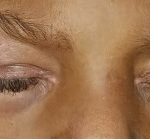FDA News Release—On April 16, saying that alternative monoclonal antibody therapies authorized to treat patients with COVID-19 remain available, the U.S. Food and Drug Administration revoked the emergency use authorization (EUA) that allowed for the investigational monoclonal antibody therapy bamlanivimab, when administered alone, to be used for the treatment of mild-to-moderate COVID-19 in adults and…

Rheum After 5: Dr. Stuart Kassan, Golf Enthusiast
About 10 years ago, Stuart S. Kassan, MD, FACP, MACR, was playing in a local golf tournament at the Denver Country Club. Each player had to tee off over a water hole in front of roughly 100 club members. His ball was the only one that landed in the water—twice. He was introduced to golf…

The 21st Century Cures Act Information-Blocking Rule
The 21st Century Cures Act (Cures Act) became law on Dec. 13, 2016, and emphasized interoperability in the exchange of healthcare information between healthcare providers, health information entities and patients. The Cures Act underscored unimpeded access to patient electronic health information (EHI) upon request, in a manner that is secure and updated automatically, and prohibits…

Late Spring 2021’s Awards, Appointments & Announcements in Rheumatology
AMA Honors Mark Andrejeski with Lifetime Achievement Award In November 2020, the American Medical Association (AMA) presented Mark Andrejeski, the recently retired executive vice president of the ACR, with its Medical Executive Lifetime Achievement Award. The award honors a medical association executive who has contributed substantially to the goals and ideals of the medical profession….

Food, Diet, Nutrition & Rheumatic Diseases—Are They Really Related?
“‘I didn’t say there was nothing better,’ the King replied. ‘I said there was nothing like it.’” —Lewis Carroll, Through the Looking Glass “Why did I get this? Was it because of my diet? What should I eat now? What diet should I follow? Are there any natural treatments I can take instead of medications?”…

Case Report: Rapidly Progressive Interstitial Lung Disease in a 6-Year-Old
Clinically amyopathic dermatomyositis (CADM), a rare subset of dermatomyositis (DM), is an autoimmune disease characterized by cutaneous findings of typical DM without evidence of myositis. Childhood presentation of CADM is rare, and not many studies describe the epidemiology of juvenile CADM.1,2 Although lung disease is rare among patients with juvenile DM, a few reports have…

A Team Approach Improves the Transition from Pediatric to Adult Care
Nearly all adolescents and young adults (AYAs) with chronic pediatric rheumatic disease require transfer of care to an adult rheumatologist, yet almost half are lost from care at the time of transfer.1-3 Although sometimes framed as a discrete event, transition refers to the longitudinal process, often spanning several years, in which AYAs and their families…

A Lack of Pediatric Providers Can Have Long-Term Consequences
As with rheumatology care in general, the current demand for pediatric rheumatologists is greater than the supply of providers available. That imbalance is expected to increase significantly by 2030 unless action is taken, according to a new workforce study published in Arthritis Care & Research.1 The lack of pediatric providers is a serious problem that…

Marc R. Chevrier, MD, PhD, FACR, Lupus Research Memorial Fund Established
The Lupus and Allied Diseases Association Inc. established the Marc R. Chevrier, MD, PhD, FACR, Lupus Research Memorial Fund at the Rheumatology Research Foundation, effective March 1. This fund was established to honor the life and legacy of Marc Chevrier, MD, PhD, FACR, a pioneer and patient advocate in the field of lupus. About Dr….

What the ARP & the College Are Doing For You
As we emerge from the grips of a global pandemic, we are taking this opportunity to pause and reflect on the ARP and what our division brings to the care of our patients. I found the words of Amanda Gordon’s inaugural reading of her poem, “The Hill We Climb,” inspirational and instructive for our past,…
- « Previous Page
- 1
- …
- 177
- 178
- 179
- 180
- 181
- …
- 842
- Next Page »